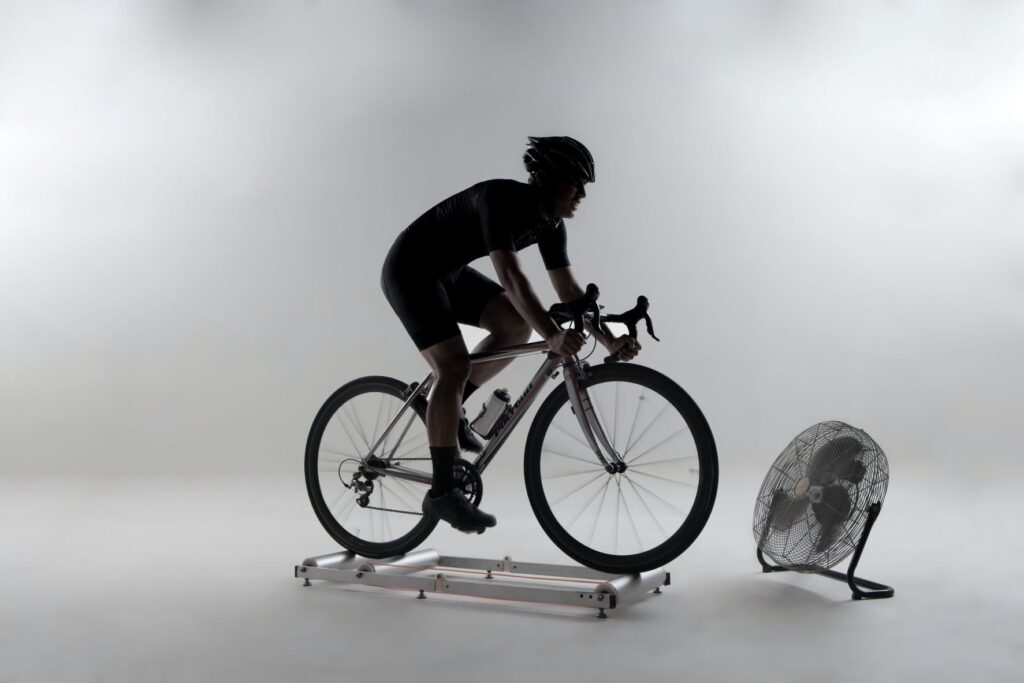Training Types In Cycling Explained
As you begin to take your cycling more seriously you will probably come across terms like training types, zones, polarised and pyramidal training and odd acronyms like HIT and HVLIT. But what do these actually mean? In this blog we look over the different approaches to cycling training and which could be best for you.
Get in the zone
To learn about different training types we firstly need to understand what training zones are and how to use them. Zones are a way of categorising how much effort you are undertaking at any given time. They can be measured through perceived effort (how hard you think you are going), your heart rate as a percentage of your maximum or most reliably by using the power you are producing as a percentage of your functional threshold power (FTP). For the purpose of this blog we’ll focus on the latter.
The most common zonal model uses 7 zones, ranging from active recovery (efforts below 55% of your FTP). Increasing in intensity all the way up to Anaerobic Capacity (efforts above 120% of your FTP). All well built training plans will prescribe training sessions where you spend a certain amount of time in specific zones. To simplify things for the purpose of this blog we will use a three zone model. Zone 1 represents low intensity training (Active recovery & Endurance zones), zone 2 represents moderate intensity (Threshold & Tempo zones) and zone 3 represents high intensity (VO2 Max & Neuromuscular training).
Fitness is the body’s reaction to training stimulus. To increase fitness you need to increase the volume or intensity of your training. Using zones is certainly the best way to categorise the effort that athletes are undertaking when training. What is still strongly debated however is what distribution of times spent in these zones is most effective.

Inefficient Training Types
It’s common for those new to training to think that training hard equates to training well but this isn’t the case. Relying entirely on high intensity training (HIT) will greatly increase training stimulus but will require greater recovery time, increase the risk of injury and leave you feeling burnt out. It will also leave you without the aerobic engine needed to perform well in longer duration events.
If you flip this on its head then you have high volume low intensity training (HVLIT). This is where you spend all of your time performing low intensity zone 1 work. It’s easy to accumulate time at this intensity so is less likely to leave you injured. While it will leave you well prepared for long endurance efforts, your ability to perform high intensity work will be underdeveloped.
Online training platforms such as TrainerRoad use an approach that tries to get the best of both worlds. They advocate ‘threshold’ or ‘sweet spot’ plans that spend the majority of the volume at moderate intensity or zone two. This can be effective and is a good introduction to structured training however it can lead to plateaus in performance.
pyramidal or polarised?
The answer is to follow a training plan that provides a more balanced approach to distributing intensity throughout your sessions. The two most common training types that achieve this are pyramidal and polarised training.
Pyramidal training is so called because the distribution of intensity forms a pyramid. The majority of the time (~75%) training is done at low intensity or zone one. With a smaller amount of time spent (~20%) training at moderate intensity or zone two. Only a very small amount of time (5%) is spent in zone three doing high intensity work.
Polarised training plans rely on training time spent at opposite ends of the intensity spectrum, with no time spent in the middle. Most spend roughly 80% of training time in the low intensity zone and 20% in the high intensity zone.

Which should you choose?
So which is best for you? It really depends on a number of factors. First to consider is your experience levels. High intensity work is tough on the body. If you’re relatively new to cycling you may not be able to recover and adapt to the level of intensity required for a polarised plan. If you instead try a pyramidal plan the predominance of low and moderate intensity work will allow your body to strengthen and become accustomed to the smaller level of high intensity work.
Another factor to keep in mind is the kind of event you are training for. The demands of road or criterium racing are very different to those of a time trial or triathlon bike leg. A triathlete will likely be better suited to a pyramidal model as they will be aiming to output steady power over the course of their event. Road racers will have to utilise their anaerobic abilities much more often so a polarised plan could help them prepare for this more effectively.
There is also the option of combining the two. It is increasingly common for athletes to utilise a pyramidal plan during their base training then to switch to a polarised plan later in the season. This allows them to build volume while easing into high intensity work, lowering the risk of burnout and injury. Once competition season approaches they can safely switch to a polarised plan, knowing they have built the strength necessary to handle greater volumes of work at high intensity.
Get help with blackzone coaching
Choosing the plan that will get the best out of your body can be difficult. Especially if you’re inexperienced and don’t have anyone to guide you. There may be time pressures that don’t allow you to spend hours riding at low intensity like the professionals can. This is where the expertise of a coach really comes into play. Here at Blackzone Coaching we are experts in helping you unlock your peak performance using training plans designed specifically to match your lifestyle and chosen discipline. Contact us today to find out more.